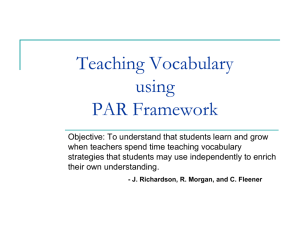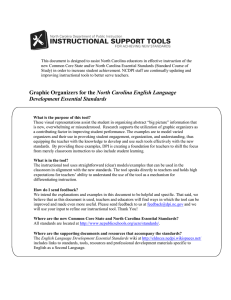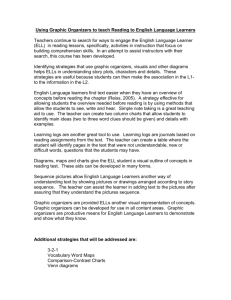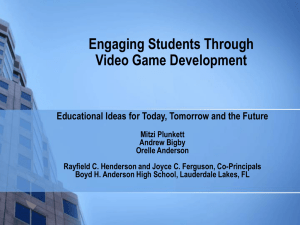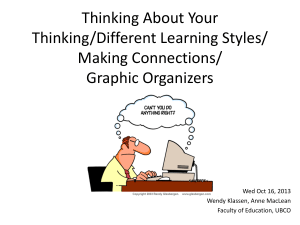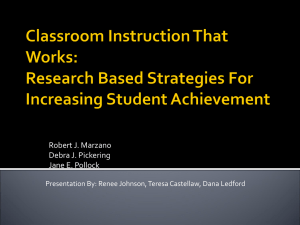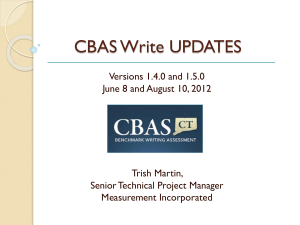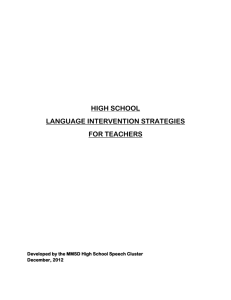Renton Technical College Preview Issue
advertisement
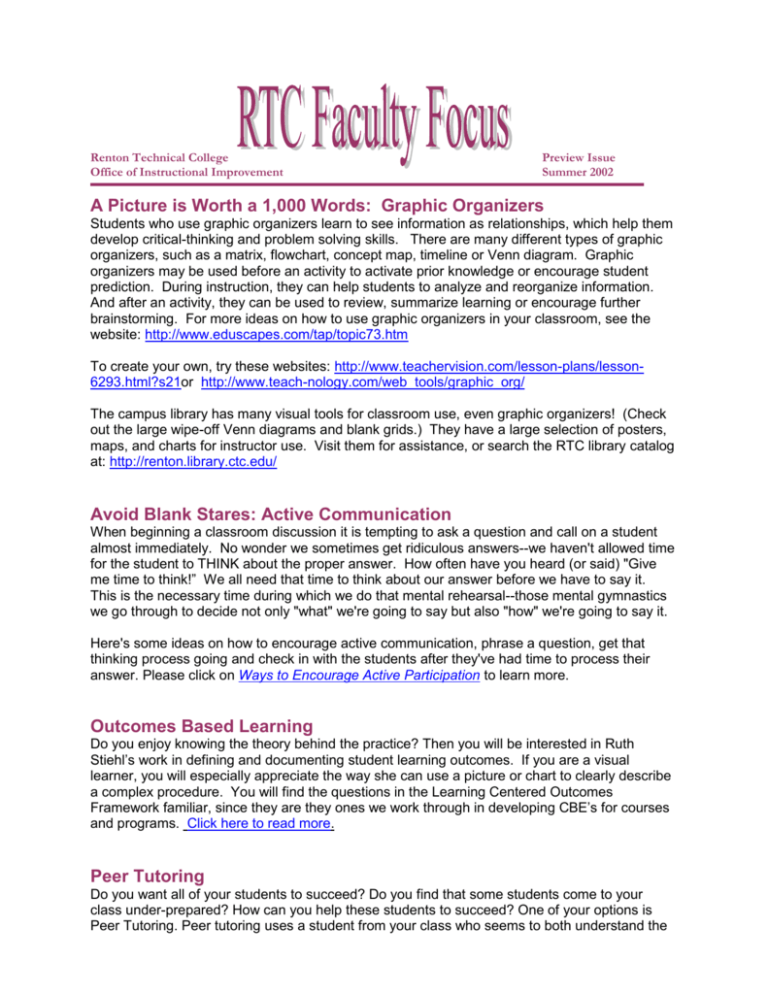
Renton Technical College Office of Instructional Improvement Preview Issue Summer 2002 A Picture is Worth a 1,000 Words: Graphic Organizers Students who use graphic organizers learn to see information as relationships, which help them develop critical-thinking and problem solving skills. There are many different types of graphic organizers, such as a matrix, flowchart, concept map, timeline or Venn diagram. Graphic organizers may be used before an activity to activate prior knowledge or encourage student prediction. During instruction, they can help students to analyze and reorganize information. And after an activity, they can be used to review, summarize learning or encourage further brainstorming. For more ideas on how to use graphic organizers in your classroom, see the website: http://www.eduscapes.com/tap/topic73.htm To create your own, try these websites: http://www.teachervision.com/lesson-plans/lesson6293.html?s21or http://www.teach-nology.com/web_tools/graphic_org/ The campus library has many visual tools for classroom use, even graphic organizers! (Check out the large wipe-off Venn diagrams and blank grids.) They have a large selection of posters, maps, and charts for instructor use. Visit them for assistance, or search the RTC library catalog at: http://renton.library.ctc.edu/ Avoid Blank Stares: Active Communication When beginning a classroom discussion it is tempting to ask a question and call on a student almost immediately. No wonder we sometimes get ridiculous answers--we haven't allowed time for the student to THINK about the proper answer. How often have you heard (or said) "Give me time to think!” We all need that time to think about our answer before we have to say it. This is the necessary time during which we do that mental rehearsal--those mental gymnastics we go through to decide not only "what" we're going to say but also "how" we're going to say it. Here's some ideas on how to encourage active communication, phrase a question, get that thinking process going and check in with the students after they've had time to process their answer. Please click on Ways to Encourage Active Participation to learn more. Outcomes Based Learning Do you enjoy knowing the theory behind the practice? Then you will be interested in Ruth Stiehl’s work in defining and documenting student learning outcomes. If you are a visual learner, you will especially appreciate the way she can use a picture or chart to clearly describe a complex procedure. You will find the questions in the Learning Centered Outcomes Framework familiar, since they are they ones we work through in developing CBE’s for courses and programs. Click here to read more. Peer Tutoring Do you want all of your students to succeed? Do you find that some students come to your class under-prepared? How can you help these students to succeed? One of your options is Peer Tutoring. Peer tutoring uses a student from your class who seems to both understand the material and have an affinity to help others. That student becomes a paid tutor to help another who needs a little help. What kind of help? How does this tutoring program work? The tutors work under your direction. You are the content expert and you know what your students need! The tutors go through training. Instruction in how to study, prepare for tests, etc. is available for tutors and their student(s). If you want to know more about how this program can help you to help all of your students succeed, write peertutor@rtc.edu. If you prefer to talk in person you may stop by the Instructional Improvement Office in J-201 and speak with Susie Navone, or call x5514. Quotable "The society which scorns excellence in plumbing as a humble activity and tolerates shoddiness in philosophy because it is an exalted activity will have neither good plumbing nor good philosophy: neither its pipes nor its theories will hold water." John W. Gardner The mission of the Office of Instructional Improvement is to advance educational strategies, seek to improve the quality of learning environments, and support RTC staff as they prepare a diverse student population for work.
